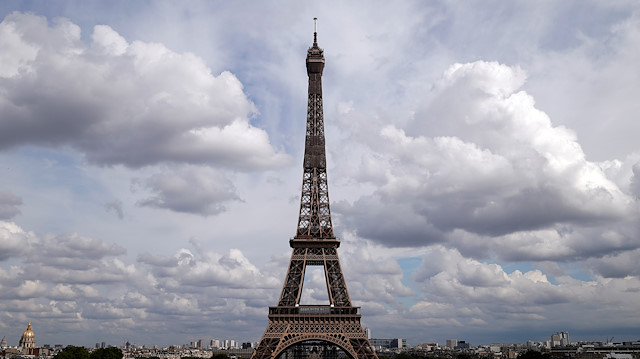
A general view shows the Eiffel Tower as she gets ready to re-open to the public following the coronavirus outbreak, in Paris, France, June 17, 2020
Air quality worsening since end of virus lockdown on May 11, says new study
Air pollution in Paris has more than doubled since the end of lockdown on May 11, and hit the highest level among European cities, said a new study put out on Wednesday.
The Center for Research on Energy and Clean Air (CREA), an independent research organization based in Helsinki, Finland, found that the level of nitrogen dioxide (NO2) in the atmosphere has nearly doubled since confinement was lifted.
Although the level of air pollution -- which dropped by 60% during lockdown -- is not presently at pre-COVID-19 level, it has risen in the capital by 120%.
COVID-19, the disease caused by the coronavirus, originated in China last December and has spread to 188 countries and regions worldwide. Brazil and the US are currently the worst-hit regions.
President Emmanuel Macron put France under strict lockdown starting March 17, prohibiting citizens from traveling outside of 1 km diameter from their residence, and shuttering all non-essential businesses, including all schools and houses of worship. As a result, vehicular traffic was severely reduced.
The pandemic has killed 29,720 people in France and almost 480,000 worldwide, with infections reaching over 9.2 million, according to figures compiled by US-based Johns Hopkins University.
The Hungarian capital Budapest and Norway's capital Oslo are the two cities after Paris with the poorest air quality.
The pollution is mainly due to traffic as it is in the form of NO2, emitted from automobiles.
According to Airparif, an air quality monitoring network here in France, the three leading causes of air emissions in the Ile-de-France are transportation, industry, and heating of homes and businesses. Collectively, they represent 95% of CO2 emissions.
Paris has long been a locus of high pollution, too often that the European Court of Justice condemned the city in 2019 its limited action against NO2 air pollution.
The CREA has also warned that those who have recovered from COVID-19 could be more at risk with the drop in air quality.
In the aftermath of the pandemic, Paris Mayor Anne Hidalgo has made efforts to curb vehicular traffic by pedestrianizing roads in the city center, phasing out car lanes and parking spots. Her most celebrated move: the installation of more fully protected bike lanes that start in the center and go as far out as the suburbs.
Known already for instituting anti-pollution and anti-congestion measures, Hidalgo has vowed to keep traffic from returning to its pre-virus levels. French citizens were prohibited in the weeks after lockdown was lifted from travelling more than 100 km from their homes; with that restriction now eradicated, drivers are back on the roads in force.
#Air pollution
#Center for Research on Energy and Clean Air (CREA)
#France
#pandemic
#Paris


